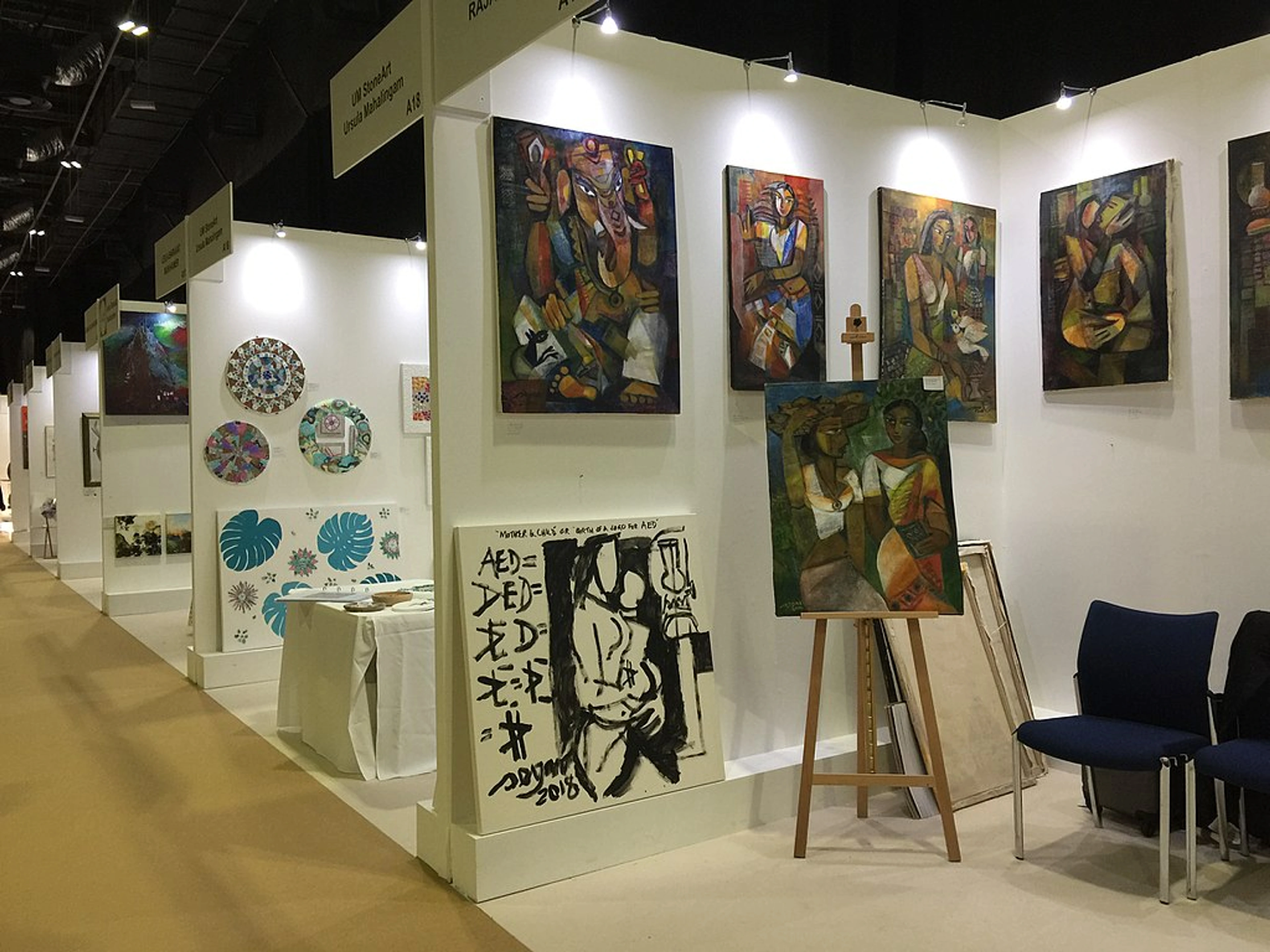
NYC Art Maze: Your Personal Thread Through the Best Galleries & Museums
Navigate NYC's art maze with this deeply personal guide. Discover the best museums (Met, MoMA, Guggenheim) and galleries (Chelsea, LES, Tribeca, Bushwick), find hidden gems, get practical tips, and explore the scene through an artist's eyes, complete with anecdotes, introspective thoughts, and essential details.
NYC's Art Maze: Your Personal Thread Through the Best Galleries & Museums
So, you want to dive into the New York City art world? Deep breath. It's less of a scene and more of a sprawling, glorious, slightly terrifying universe. NYC isn't just one of the best art cities globally; for many, it is the epicenter. From ancient treasures that make you feel tiny to contemporary art so fresh it practically vibrates, the city throws everything at you. Finding the best art galleries in NYC, the truly top art galleries New York offers, or even just the essential museums can feel like navigating a labyrinth blindfolded. And honestly? The sheer volume can be overwhelming. It's a positive challenge, though, part of the adventure of this incredible art maze.
Trust me, I've been there. My first attempt at gallery hopping in Chelsea involved getting completely turned around between 10th and 11th Avenues, ending up in a loading dock, and questioning all my life choices involving maps. It felt less like an art walk and more like an accidental urban exploration mission, a moment of feeling utterly out of place and slightly foolish amidst the polished art world. And the "slightly terrifying universe" part? Sometimes it's the sheer scale, sometimes it's walking into a hushed, minimalist gallery where a single dot on the wall is priced higher than your rent, and you're convinced you're about to break something just by breathing. Or maybe it's standing in front of a piece you just don't get, feeling a pang of inadequacy, wondering if you're missing some crucial code everyone else seems to understand. It's a universe that demands you find your footing, and this guide is your personal thread to help you navigate it, weaving through the different districts and institutions like finding your way through a complex, ever-changing labyrinth.
This guide is your thread through that maze. We'll hit the unmissable titans (galleries in Manhattan get a lot of love, naturally), explore the buzzing gallery districts people mean when they search "best galleries New York," and uncover gems beyond the usual suspects. Think of it as getting insider tips from someone who's gotten happily lost in NYC's art maze more times than they can count (and maybe bought some art along the way). Ready? Let's go.
First, a quick clarification: when people talk about the "NYC art scene," they often mean two distinct things: museums and commercial galleries. Museums (like The Met or MoMA) are generally ticketed institutions focused on collecting, preserving, and exhibiting art across various periods or specific focuses. Commercial galleries (like those in Chelsea or the LES) are typically free to enter and view exhibitions; their primary business is representing artists and selling their work. Both are vital, but they offer very different experiences – different paths through the maze, each worth exploring.
The Icons: NYC's Heavy-Hitter Museums You Can't Miss
Okay, let's start with the big names – the places that define art in New York City. These aren't just museums; they're cultural landmarks, demanding your time and attention (and comfortable shoes!). Visiting them feels like walking through the main arteries of the art world, essential stops on your journey through the maze.
The Metropolitan Museum of Art (The Met)
Perched on Museum Mile (Fifth Avenue), The Met is... well, The Met. It's less a museum, more a small country dedicated to art history. Seriously, its collections span everything – from Egyptian temples (yes, a whole one - the Temple of Dendur, which always makes me ponder the incredible craftsmanship and dedication of ancient artists, especially the way the light hits the stone at different times of day, connecting you across millennia) and Greek gods looking stoic, to European Old Masters you've seen in books.
It holds dazzling Islamic art, entire universes of Asian art, fancy furniture, shiny armor, iconic fashion via the Costume Institute, and even hefty doses of modern and contemporary work. Walking through the Met makes me feel like a time traveler, hopping centuries and continents with every turn. It's impossible to see it all in one go, and trying will definitely lead to "masterpiece fatigue." Pick a wing, an era, or follow your curiosity. Consider it a multi-visit relationship.
I always make a point to see the Temple of Dendur – the scale and history are just breathtaking, a reminder of how art connects us across millennia. And finding a quiet corner to sketch a detail from a Roman sculpture or just absorb the colors in a Fauvist painting feels like tapping into a deep well of art inspirations.
- Pro Tip: Admission is required, but it's crucial to understand the nuance: pay-what-you-wish is the suggested admission for NY residents and NY/NJ/CT students (with valid ID). For everyone else, the standard admission price applies unless you qualify for the PWYW. This is a common point of confusion, so plan accordingly! And don't forget its medieval cousin uptown, The Met Cloisters (more on that later). It's arguably the most famous art gallery in new york if you count museums as galleries (which many people do in searches!). Oh, and the rooftop garden cafe? A perfect spot for a break with killer Central Park views – a little oasis in the maze.
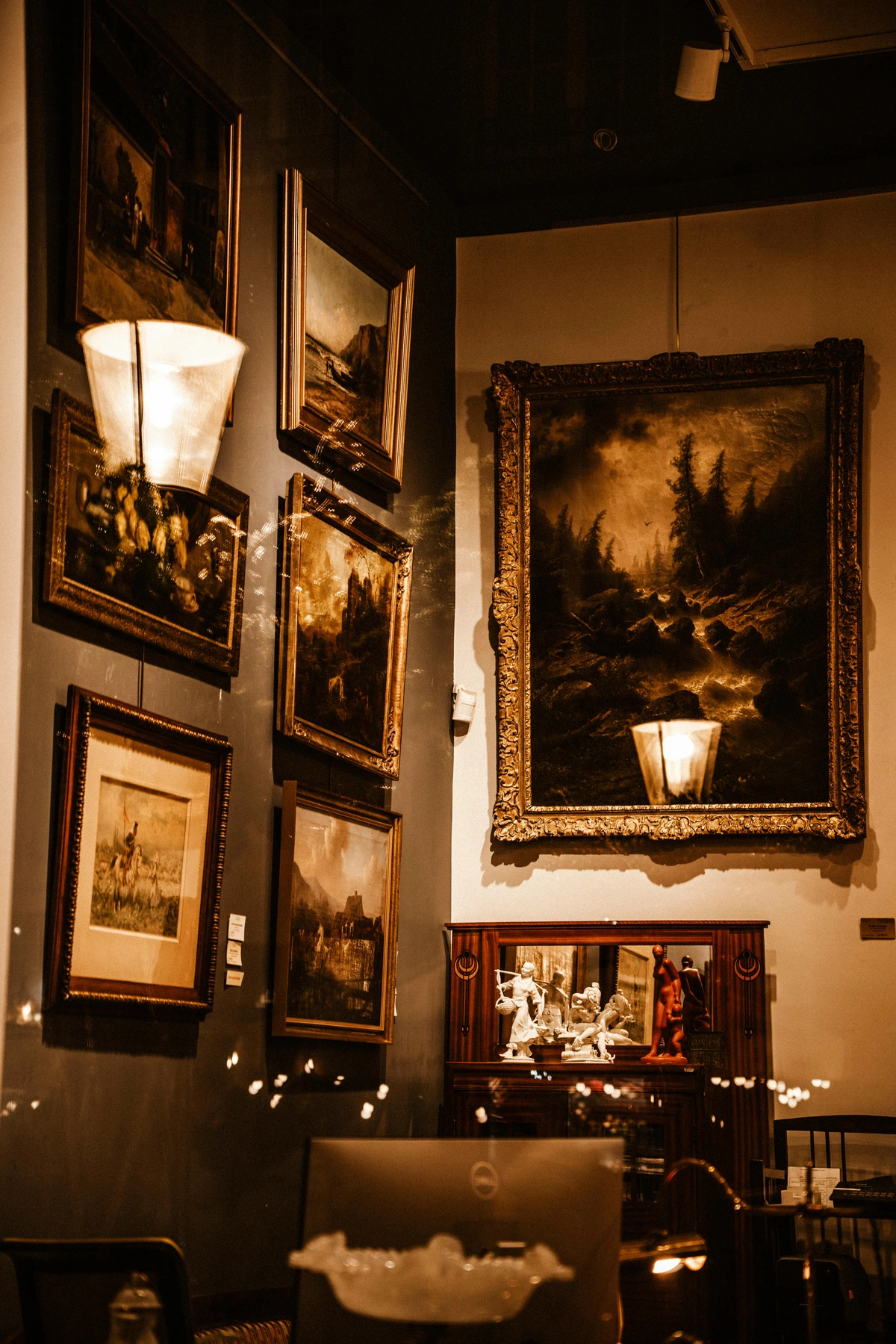
Museum of Modern Art (MoMA)
Right in Midtown Manhattan, MoMA is the king of modern art. If you're looking for the story of how art got weird and wonderful from the 1880s onwards, this is your mothership. It's practically synonymous with Abstract Expressionism – think Pollock's drips and de Kooning's fierce brushwork, alongside jaw-dropping works by Picasso (yes, Les Demoiselles d'Avignon is here!), Matisse, Van Gogh (yes, that Starry Night!), Monet, Warhol, Kahlo... the list is insane. It's one of the best museums for modern art on the planet. Plus, their design, architecture, photography, and film collections are top-tier.
MoMA always manages to surprise me, even after countless visits, and Van Gogh's Starry Night here always stops me in my tracks – it just glows differently, almost vibrating with energy, perhaps because of the specific lighting or the sheer weight of its fame in that particular room. I often find myself studying how artists like Matisse used color, or how the Abstract Expressionists conveyed emotion through gesture – it's like getting a masterclass in how artists use color and form just by looking. Admission required. A must for anyone exploring modern art.
Don't miss the Abby Aldrich Rockefeller Sculpture Garden at MoMA. It's a beautiful urban oasis, a serene outdoor space tucked away from the city bustle, featuring significant sculptures by artists like Rodin, Matisse, and Barnett Newman. It's a perfect spot to decompress and let the art breathe under the open sky – a peaceful detour in the heart of Midtown.
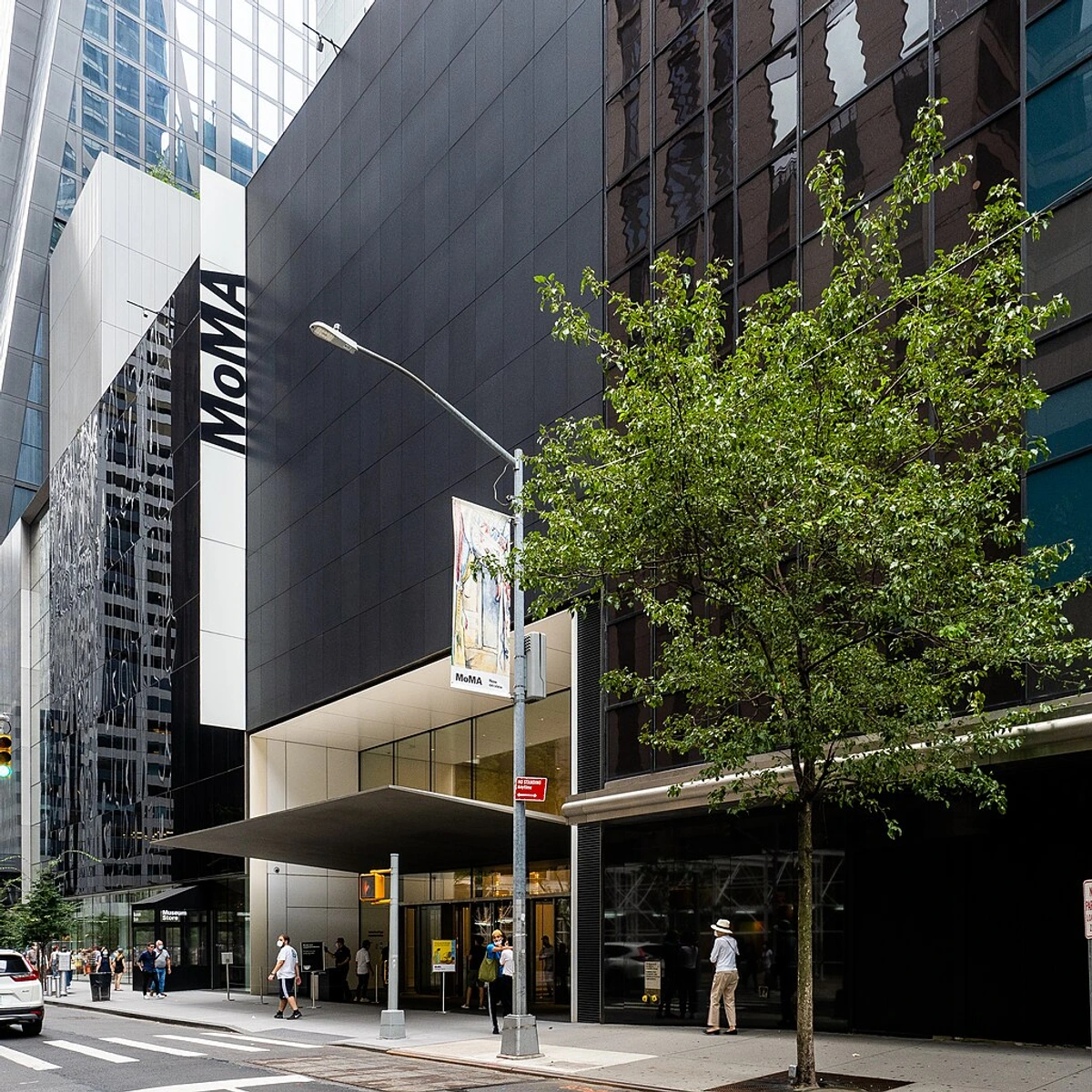
Solomon R. Guggenheim Museum
You know it – the spiraling Frank Lloyd Wright masterpiece on the Upper East Side. Walking up its ramp is a unique way to see art, primarily Impressionist, Post-Impressionist, early modern (they have tons of Kandinsky), and contemporary art. The building itself competes with the art for attention. It’s an architectural icon of modern art itself. Walking the Guggenheim ramp feels like a pilgrimage, a slow ascent through art history.
Keep an eye out for their significant Rothko holdings, which feel particularly powerful in the unique space – the way the colors seem to hum in that light-filled void is something every artist should experience. I remember feeling a bit dizzy the first time, trying to look at the art while also navigating the slope and the crowds, but it's a wonderfully disorienting experience that forces you to engage with the art and the space in a different way, almost like the art is swirling around you as you ascend. Admission required.
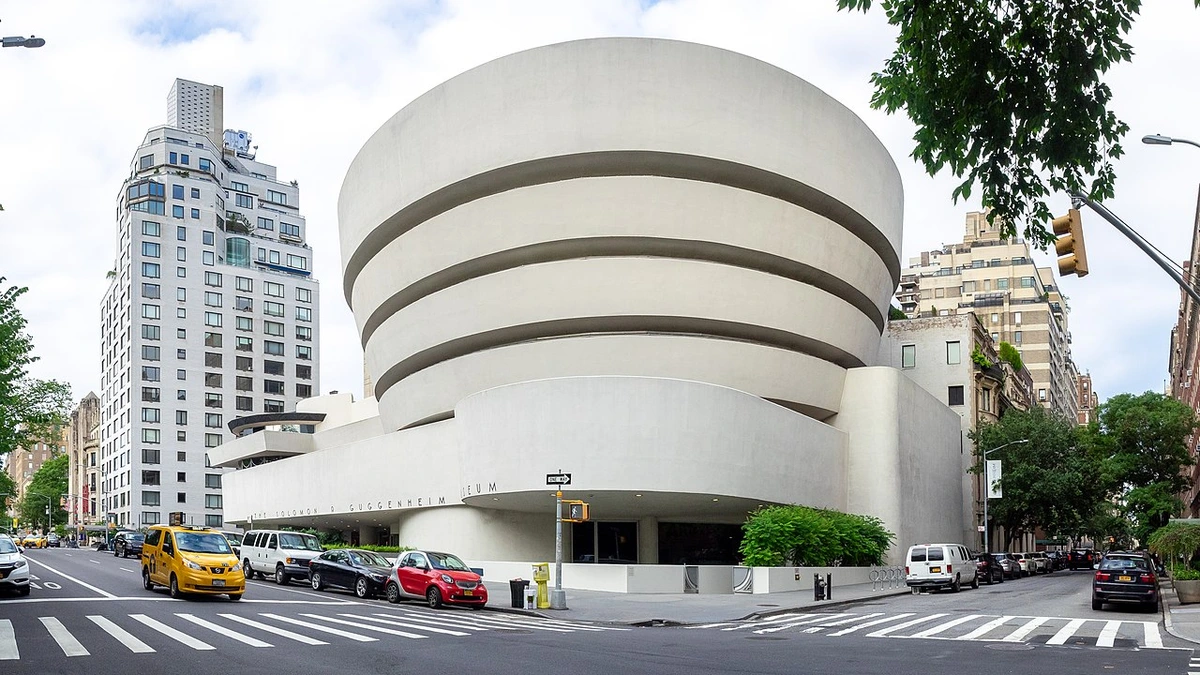
Whitney Museum of American Art
Down in the Meatpacking District, the Whitney is all about American art, mainly from the 20th century to right now. Housed in a Renzo Piano building with killer city views, it champions living artists and isn't afraid to show challenging work. Its influential Whitney Biennial is a snapshot of what's happening in American art now. The outdoor terraces are a key feature and a fantastic place to decompress and take in the city after absorbing all that American creativity.
I love how the Whitney feels so connected to the city outside its walls, both literally through the views and figuratively through its focus on contemporary American voices. Seeing how artists here are responding to the current moment is always inspiring for my own creative journey, reminding me that art is a living, breathing response to the world we inhabit. Admission required. A key player among the best art galleries NYC offers for American perspectives. The Whitney is particularly strong in photography, video, and installation art, showcasing how American artists have pushed boundaries across various media.
New Museum
On the Bowery (Lower East Side), this is NYC's only museum strictly dedicated to contemporary art. Its striking SANAA-designed building signals its intent: showcasing the new. Expect emerging international artists, experimental ideas, and a finger on the pulse of current art conversations. It feels like the city's contemporary art antenna, always picking up the freshest signals.
I often leave the New Museum feeling slightly bewildered but also buzzing with new ideas – it's a place that pushes boundaries and makes you question what art can be. I remember seeing an installation there that used everyday objects in a way I'd never considered, completely shifting my perspective on materials and meaning. Admission required. It's one of the top art galleries in New York if your focus is purely contemporary.
The Frick Collection
Temporarily housed at Frick Madison (the cool Brutalist building on the UES that used to be the Whitney) while its stunning Fifth Avenue mansion gets a facelift. This is an intimate gem. Think Old Masters (Vermeer, Rembrandt, Titian, Goya) and exquisite decorative arts in a focused, almost personal setting. It feels like stepping into a Gilded Age collector's private world, a cozy, intellectual hug of masterpieces.
Keep an eye out for iconic works like Vermeer's Mistress and Maid or Holbein's portraits – seeing these up close in such a refined setting is a different kind of awe than a massive museum. Admission required.
- Historical Note: The building currently housing the Frick Collection, Frick Madison, was famously the home of the Whitney Museum of American Art from 1966 to 2014. It's a fascinating bit of NYC art history, seeing how different institutions inhabit and transform spaces – another layer in the city's ever-evolving art maze.
Asia Society
Also on the Upper East Side, the Asia Society is a fantastic resource for exploring Asian and Asian American art and culture. Their exhibitions are always thoughtfully curated and offer a deep dive into diverse artistic traditions and contemporary practices from across the continent and its diaspora. It's a vital spot for broadening your perspective beyond the Western canon and discovering different approaches to form, narrative, and material. I've seen exhibitions here that introduced me to artists and art forms I knew nothing about, opening up entirely new avenues for art inspirations.
New York Public Library (Stephen A. Schwarzman Building)
While not strictly an art museum, the iconic main branch on Fifth Avenue is a cultural landmark with stunning architecture and notable art within its walls, including murals by Edward Laning and historical artifacts. It offers a different kind of cultural immersion, a quiet space for reflection amidst architectural grandeur. It's a reminder that art and beauty are woven into the city's public spaces in unexpected ways.
The Shifting Landscape: Following the Threads of NYC's Gallery Districts
Before we dive into specific gallery districts, it's worth noting how the gallery landscape itself has migrated over the decades. It's a bit like watching tectonic plates shift, only faster and fueled by rent prices and artistic trends. The historical migration pattern generally went something like this: the elegance of 57th Street gave way to the cast-iron cool of SoHo in the 70s and 80s. Then, as SoHo became a shopping mecca, the scene largely decamped to the vast warehouse spaces of Chelsea in the 90s and early 2000s. More recently, we've seen significant growth and migration towards the Lower East Side (LES), Tribeca, and even deeper into Brooklyn, particularly Bushwick, each offering a different vibe and often, different kinds of spaces.
Understanding this flow helps contextualize why certain areas feel the way they do today – it's why you'll find some big names still clinging to the UES, while the cutting edge often pops up in unexpected corners like Bushwick. It's like the maze itself is constantly redrawing its paths, forcing you to adapt and explore new routes. From my perspective, walking through SoHo now feels like visiting a ghost of its artistic past, while the contrast between Chelsea's sometimes sterile polish and the LES's vibrant, slightly chaotic grit is palpable and fascinating – each neighborhood's character is deeply intertwined with the art it hosts. This historical movement has created the multi-threaded maze structure we navigate today.
Chelsea: Following the Main Thread of NYC's Contemporary Gallery Scene
Okay, beyond the museum giants lies the sprawling world of commercial galleries in Manhattan. And the undisputed heavyweight champion district is Chelsea, roughly West 18th to West 28th Streets, between 10th and 11th Avenues. This is where you'll find the highest concentration of new york contemporary art galleries. Prepare for sore feet and potentially an overwhelmed visual cortex – in a good way! Walking into some of these spaces, like a Gagosian or Zwirner, can be initially intimidating; the sheer scale of the rooms and the art makes you feel tiny, like you've stumbled into a temple of commerce and culture. It's like following the widest, most well-trodden path in the maze.
Who's Here
This list is by no means exhaustive – Chelsea is packed! – but here are some key players and examples of the types of spaces you'll find. You'll encounter global powerhouses, often referred to as "mega-galleries," that represent the biggest names in the art world. These are the "blue-chip" galleries, dealing in established artists with high market values. Think Gagosian, David Zwirner, Pace Gallery, Hauser & Wirth, Gladstone Gallery, Lisson Gallery. These aren't just names; they're launching pads for global art stars.
Think Jeff Koons' shiny sculptures you might see at Gagosian, Yayoi Kusama's immersive infinity rooms often shown via Zwirner, or the profound canvases of Gerhard Richter you might find at Pace. These spaces are often enormous, showcasing museum-quality exhibitions, frequently focusing on large-scale painting, sculpture, and installation by established names. Walking into Gagosian, for instance, often feels like entering a cathedral of contemporary art – the scale is immense, the ceilings are soaring, and the art commands the space with a quiet, powerful presence. It's a different experience than a smaller gallery, demanding a different kind of looking.
Alongside them are countless other vital spaces, often slightly smaller in scale but equally crucial to the scene, like Luhring Augustine, 303 Gallery, Tanya Bonakdar Gallery, Kasmin Gallery, Sean Kelly Gallery. Don't miss these crucial players often considered among the best galleries New York has to offer:
- Matthew Marks Gallery: A real heavyweight. Multiple spaces usually mean multiple concurrent shows, often featuring established artists with serious pedigree. I find their photography exhibitions particularly strong when they mount them. A must-visit for serious contemporary art followers.
- Greene Naftali: Tucked away a bit, but consistently stages rigorous, often conceptually driven shows. You might find painting, sculpture, video – they don't stick to one thing. I always feel a bit smarter after leaving, even if I don't always fully 'get' everything immediately! It's a space that rewards thoughtful looking and challenges your assumptions about art, feeling more like a focused conversation than a grand pronouncement.
- Petzel Gallery: Known for a strong roster of international artists, often with a conceptual or critical edge. Their shows can be quite impactful, spanning various media. Definitely one of the top galleries in nyc for a certain kind of brainy, engaging art.
- Lehmann Maupin: Another global player with a diverse program. They represent artists from all over, and you'll often see visually engaging work here – painting, sculpture, installation. It feels dynamic, like they're really tapped into current global conversations.
- Sikkema Jenkins & Co.: Shows a fantastic mix of established and mid-career artists, often with strong painterly or photographic practices. Kara Walker is represented here, which tells you something about the caliber. It's a space I always try to hit on a Chelsea run.
- Anton Kern Gallery: Often features work with a bit of an edge, sometimes humorous, sometimes provocative. They have a great eye for artists with unique voices. You never quite know what you'll find, which is part of the fun.
The Vibe
Sleek, often massive warehouse-like spaces. Museum-quality exhibitions are the norm. This is the high-end contemporary art market in action. A typical Chelsea gallery experience for me involves walking into a vast, quiet space, trying to look knowledgeable while secretly wondering if I'm standing too close to a priceless sculpture, and appreciating the sheer intensity of the art and the hushed reverence of the few other visitors. It can feel a bit sterile compared to other neighborhoods, but the quality of the art is undeniable.
The Best Part (for most visitors)
Entry to these individual commercial galleries is almost always FREE during opening hours (typically Tuesday through Saturday, roughly 10 or 11 AM to 6 PM – but always check!). This makes Chelsea arguably the best gallery district for accessible, high-caliber contemporary art viewing. Spend an afternoon gallery hopping – wandering in and out is expected. Thursday evenings are often when new exhibitions open, creating a more social, buzzy atmosphere (sometimes with free wine!). It's a different experience than a quiet daytime visit – more crowded, more about seeing and being seen, but a great way to catch multiple new shows at once and feel the pulse of the scene. It's like the maze lights up on Thursdays! Keep in mind that while Thursday is traditional, gallery openings can happen on other nights too, so always check specific gallery schedules online.
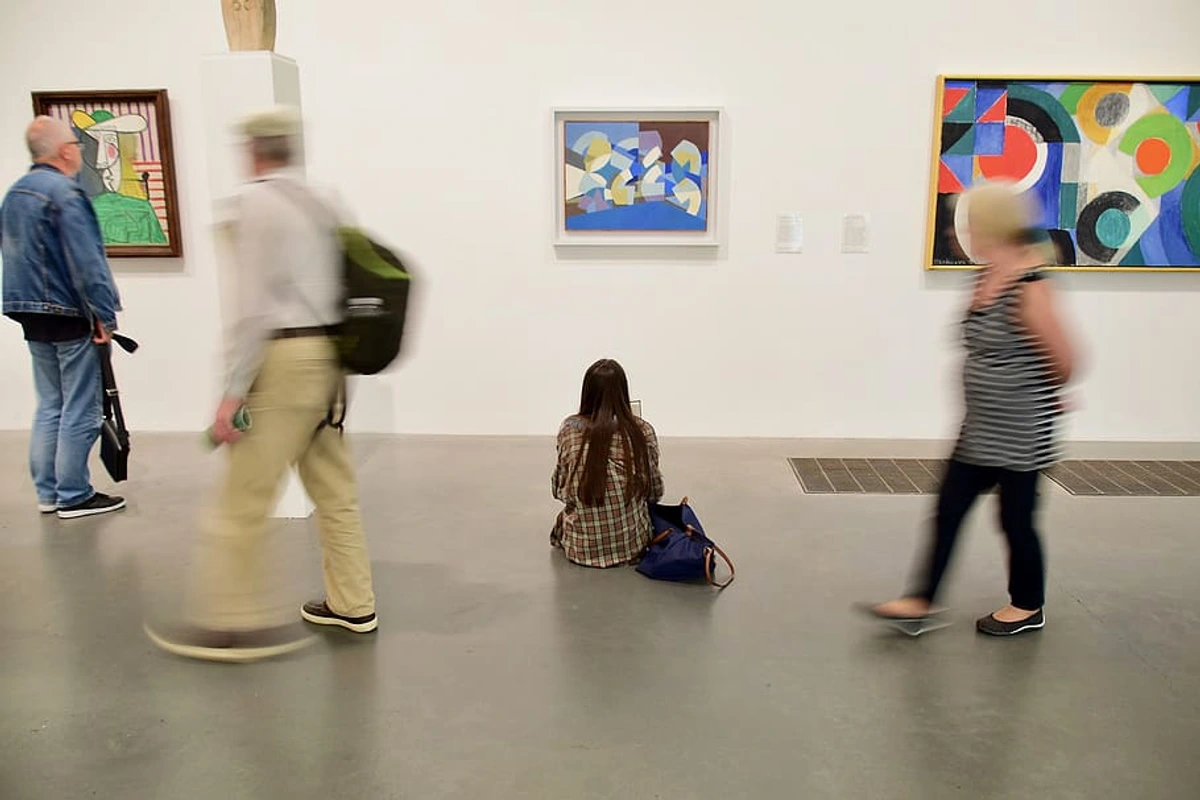
Don't Be Intimidated
Yes, the spaces can feel imposing, and staff might look busy, but they expect visitors who are just looking. Be respectful (don't touch!), maybe grab a press release at the desk, and enjoy the art. You don't need to talk to the staff unless you have a specific question about the work or are interested in buying art. A simple nod is fine. Gallery staff are often incredibly knowledgeable about the artists and the work on display; don't hesitate to ask specific questions if you're genuinely curious – they can offer valuable insights. They're there to facilitate viewing and sales, not to quiz you on art history. Discover top living artists and see what's shaping the art world. The High Line elevated park snakes through Chelsea, offering a great way to walk between gallery clusters and take a breather – a pleasant detour from the main thread.
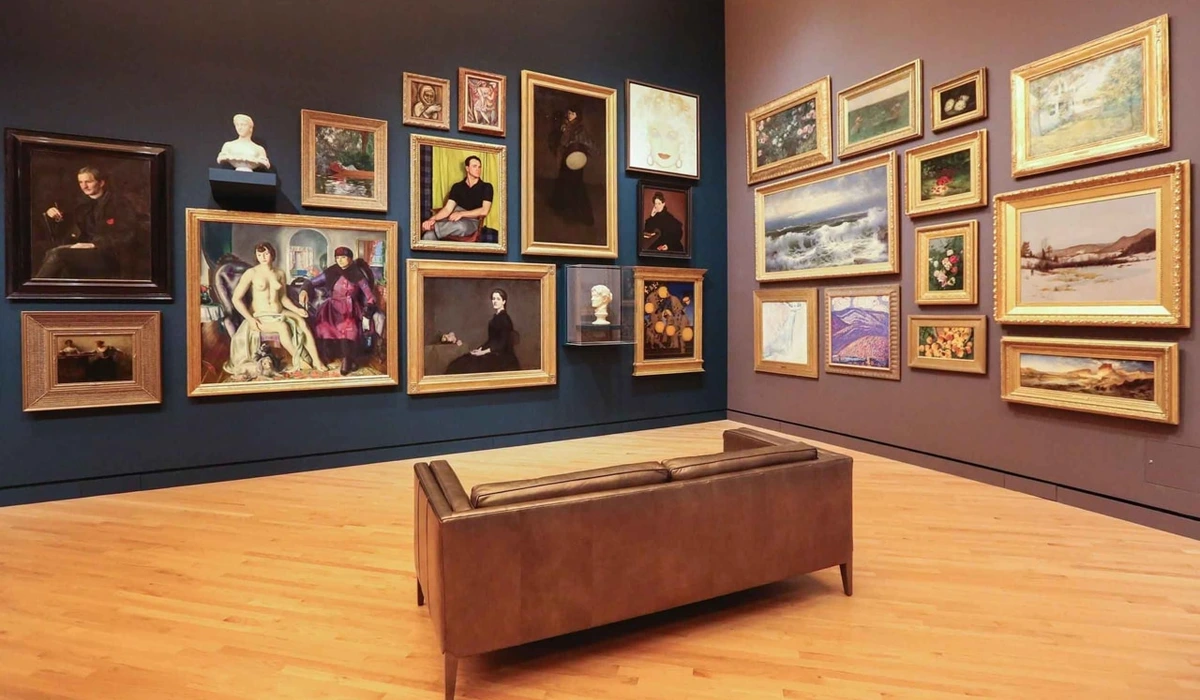
Navigating Chelsea
Key subway stops include the C/E at 23rd St or the 1 train at 18th, 23rd, or 28th St. Walking the grid between 10th and 11th Avenues, focusing on streets like W 21st, W 22nd, and W 24th, is a classic route. It's easy to spend hours just on these few blocks. Using a gallery map or online resource to plan your route within the district can really maximize your time – think of it as plotting your thread through this dense part of the maze. CRUCIAL: Gallery hours can be highly variable, especially smaller ones, and many close entirely or have reduced summer hours/appointments only, particularly in August! July and August often feature large group shows rather than solo presentations, and some galleries might adopt early Friday closures for summer weekends. ALWAYS check official websites before heading out. Don't trust old listings! I once showed up to a gallery I was dying to see only to find a tiny sign saying "Closed for August." My heart sank. Learn from my mistakes! Also, remember to check for temporary exhibitions – these are often major highlights and change frequently, so seeing what's currently on is crucial.
Chelsea is the heavyweight, but the NYC art maze has many other fascinating paths to explore, each with its own character.
Beyond Chelsea: Exploring Other Paths in the NYC Gallery Maze
NYC's art scene isn't a one-trick pony. While Chelsea is the giant, other neighborhoods offer distinct flavors and are crucial parts of the "galleries new york" landscape. Think of them as different paths through the art maze, each with its own surprises and reasons to visit. These areas often feel less like following the main thread and more like discovering intriguing side routes.
Lower East Side (LES)
Moving south from the established powerhouses of Chelsea, the Lower East Side (LES) has exploded as a hub for emerging and mid-career contemporary art galleries. It feels grittier, often more experimental than Chelsea, with a strong focus on multimedia, video, and conceptually driven work. Smaller storefront spaces are common. Think Orchard, Ludlow, Eldridge, Bowery, and Grand Streets. The LES is all about discovery – the thrill of stumbling upon something unexpected in a small, unassuming space, like finding a hidden gem tucked between a dumpling shop and a vintage clothing store. It feels less polished, more raw and energetic than Chelsea, like the art is still finding its voice alongside the neighborhood's own vibrant, slightly chaotic pulse. Great for discovering new talent and maybe finding ways to spot and buy art from emerging artists. Key players include Sperone Westwater (cool building!), Andrew Kreps Gallery, Miguel Abreu Gallery, Canada, James Fuentes, Perrotin (LES spot), Salon 94, plus tons of smaller, vital spaces. And don't forget these LES staples:
- Bridget Donahue: This gallery quickly became a vital LES spot. Known for championing artists with unique, often critically engaged perspectives. The shows feel fresh and thoughtfully curated. It's one of those places where you might discover your next favorite emerging artist – a true find on a less-traveled path.
- Bureau: A smaller space but punches above its weight with conceptually interesting shows. Often features younger artists exploring form and material in intriguing ways. I appreciate their focused presentations – sometimes less is more.
- Sargent's Daughters: Co-founded by an artist, this gallery often showcases figurative work and artists exploring identity, history, and narrative. The name itself feels evocative, doesn't it? Definitely contributes to the diverse fabric of art galleries nyc offers on the LES.
- Marc Straus: Housed in a striking historical building, this gallery presents ambitious exhibitions by international artists, often large-scale painting and sculpture. It feels a bit more established than some LES spots but retains an adventurous spirit.
- Foxy Production: Consistently shows sharp, often tech-inflected or conceptually driven work by a mix of emerging and established names. It's a gallery that makes you think about how art engages with contemporary culture and media.
Seeing work here might even give you art inspirations for pieces you'd like to buy for your own space. Many consider LES among the best nyc art galleries for the cutting edge.
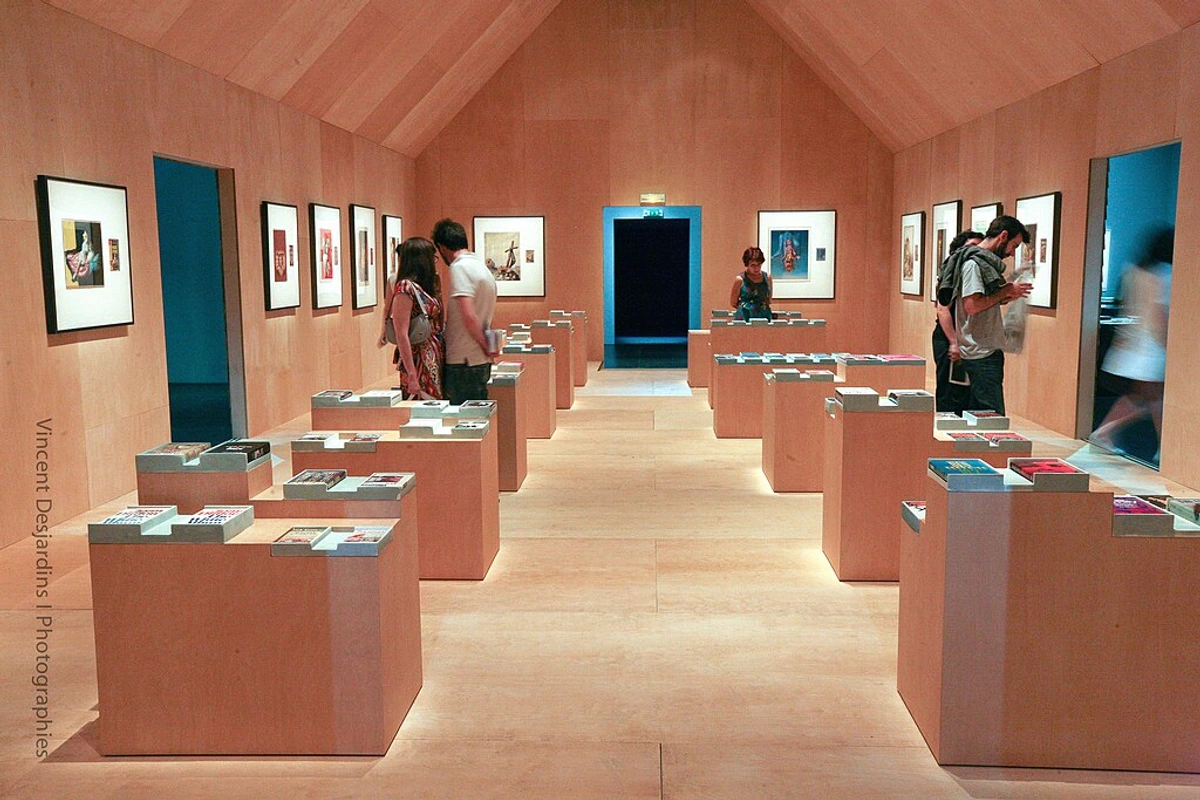
- Getting Around the LES: The F train to 2nd Ave or Delancey/Essex, or the J/M/Z to Delancey/Essex are good bets. Key streets for gallery hopping include Orchard, Ludlow, Rivington, and Bowery. It's more spread out than Chelsea, so wear those comfy shoes! Using a map or online guide to plan your route is essential here too – you're charting your own course through this dense part of the maze. Keep an eye out for the specific architectural character of the neighborhood, with its historic tenement buildings providing a unique backdrop for contemporary art spaces.
Tribeca
Moving north from the LES, Tribeca is rapidly becoming a major gallery destination, attracting established names moving from Chelsea or SoHo (partly due to rents and a desire for different spaces). You'll find large, often historic ground-floor locations. It's a mix of blue-chip (David Zwirner's Tribeca outpost, James Cohan) and strong contemporary programs (Canada moved here, Andrew Kreps, Alexander and Bonin, Bortolami, P.P.O.W.). Tribeca feels like the "next big thing" is actively happening, a blend of old NYC architecture and shiny new art spaces. There's an energy here that feels like potential, like the scene is still defining itself in these beautiful, often cavernous spaces. Add these to your Tribeca list:
- Chapter NY: Known for its thoughtful program focusing on both emerging and established artists, often with nuanced conceptual or material practices. The exhibitions here always feel carefully considered. A great example of the quality migrating to Tribeca.
- Ortuzar Projects: Specializes in focused historical exhibitions and rediscoveries, often bringing overlooked artists or movements back into the spotlight. It's a refreshing change of pace and adds historical depth to the contemporary scene – a reminder that even the new york art world has layers to uncover.
- CHART: Located in a beautiful historic space, CHART often features artists working with craft traditions, materiality, and visually engaging aesthetics. It's a reminder that contemporary art isn't just about ideas, but also about making – something I always appreciate as an artist.
It feels a bit more spread out but is a serious contender in the art galleries manhattan scene. The architectural character of Tribeca, with its industrial buildings and cobblestone streets, adds another layer to the experience of discovering art here.
- Tribeca Transit: The 1/2/3 trains to Chambers St or Franklin St, or the A/C/E to Canal St get you close. Galleries are clustered around streets like Walker, White, Lispenard, and Church Street. It's becoming a really walkable cluster, another distinct path in the maze.
Upper East Side (UES)
Heading uptown, the Upper East Side (UES) was traditionally the home of posh galleries specializing in Old Masters, Impressionism, and modern art (think Madison Avenue in the 60s/70s - Acquavella Galleries, Mnuchin Gallery). It still holds strong in these areas but also features contemporary outposts of giants like Gagosian and Hauser & Wirth, often in elegant townhouses. It's a different vibe – quieter, more established, definitely one of the top art galleries in New York for historical and blue-chip modern work. Seeing cutting-edge contemporary art displayed in a grand townhouse setting is a uniquely UES experience, a funny juxtaposition of old money elegance and new art ideas, like a minimalist sculpture sitting comfortably next to antique molding. Also check out:
- Michael Werner Gallery: A serious gallery with a long history, known for representing major figures in modern and contemporary European art, particularly German artists like Georg Baselitz and A.R. Penck. Expect museum-quality shows in an elegant setting. It feels very 'classic UES gallery' in the best way.
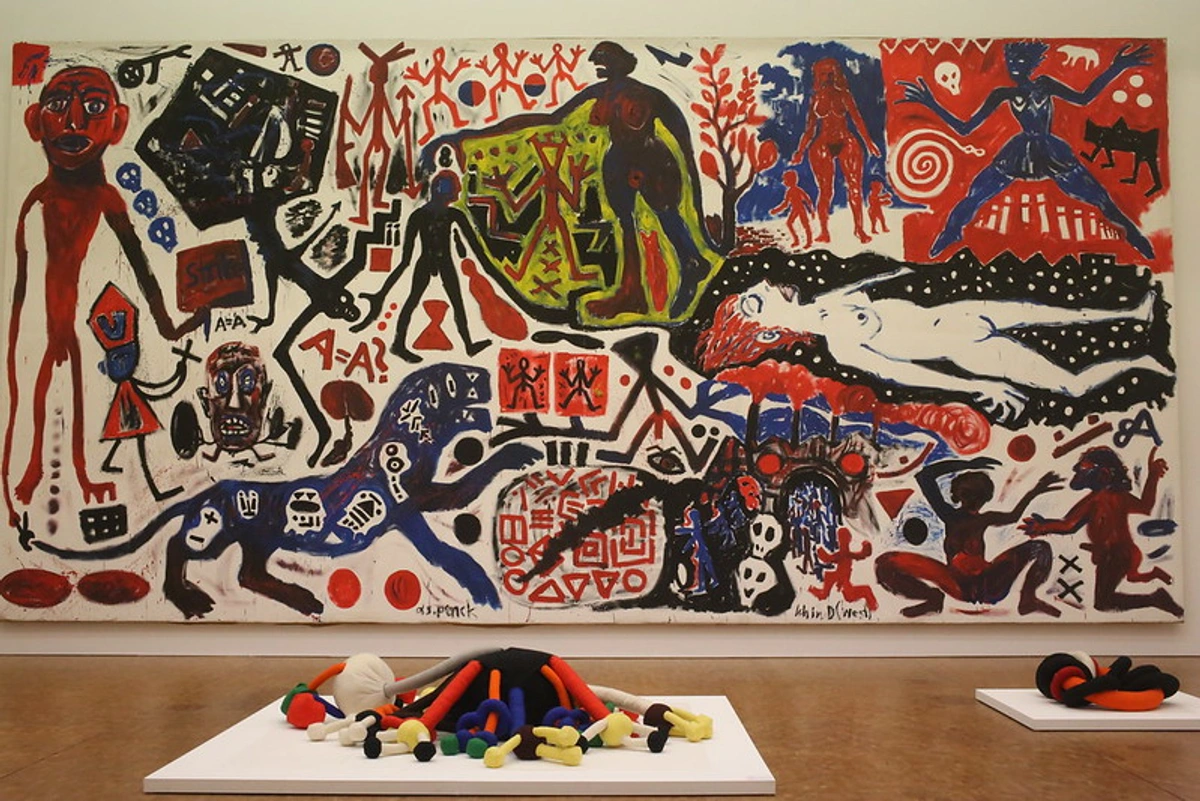
- Skarstedt Gallery: Another powerhouse, often bridging modern masters (think Warhol, Prince) with leading contemporary artists. They mount focused, high-impact shows in their townhouse space. Definitely a top stop if blue-chip contemporary art is your focus.
- Van Doren Waxter: Represents a mix of estates and contemporary artists, often with a strong focus on abstraction and painting. Their program feels curated with a distinct eye. It's a sophisticated space that rewards a closer look.
SoHo
Once the epicenter before Chelsea's rise, SoHo is now mostly high-end shopping. However, some important galleries remain, especially for photography (Howard Greenberg Gallery - a classic!, Yossi Milo Gallery - often cutting-edge contemporary, and Danziger Gallery - known for both historical and contemporary masters), design, print publishers (Gemini G.E.L. at Joni Weyl, Pace Prints, Universal Limited Art Editions (ULAE) workshop on LI but often show with NYC partners). I remember when SoHo was the place to be for galleries, and while it's changed dramatically, there are still gems if you know where to look. The historical cast-iron architecture itself tells a story of a different era, and finding a gallery tucked away feels like uncovering a piece of that history. And you absolutely must know about Carolina Nitsch for contemporary editions and Two Palms for their innovative printmaking techniques. Seriously, the craftsmanship is often mind-blowing – seeing the process behind prints can be incredibly inspiring for an artist. Also look for specific contemporary niches (Peter Freeman, Inc.). Worth a peek if you're in the area, but not the gallery hub it once was. If you're interested in prints specifically, these publishers represent the gold standard, often working with major contemporary artists.
Design Galleries
Beyond fine art, NYC has stellar galleries dedicated to historical and contemporary design. Think collectible furniture, lighting, ceramics, glass, and objects that blur the lines between functional item and sculpture. Keep an eye out for spaces like R & Company (Tribeca/UES) and Friedman Benda (Chelsea), which often showcase incredible craftsmanship and innovative forms. You might see anything from a mid-century modern chair by a famous designer to a cutting-edge, 3D-printed ceramic vessel. Exploring these spaces makes you think about form, function, and material in new ways – great for art inspirations.
Midtown / 57th Street
Midtown / 57th Street is less dense, but home to significant galleries showing established modern and contemporary artists (Marian Goodman Gallery, Pace Gallery flagship, Marlborough Gallery), conveniently close to MoMA. A quieter, more traditional path.
Bushwick (Brooklyn)
Want to see the emerging artist scene, artist-run spaces, and a more DIY vibe? Head to Bushwick (Brooklyn) (the area around the Jefferson L train stop is a good starting point). Galleries are spread out in former industrial buildings, hours can be limited (check first!), but it offers a glimpse into the grassroots art community. Bushwick is an adventure – getting there feels like a journey, and finding a hidden gem in a converted warehouse feels like a real reward, a true discovery in the maze, like finding a secret passage! I remember walking down a seemingly deserted street, only to find a vibrant gallery opening happening inside a building that looked like it was still used for manufacturing. Look for open studio events like Bushwick Open Studios, or similar events in other artist-heavy neighborhoods like Gowanus Open Studios or LIC Arts Open (check dates online!). These are fantastic, if chaotic, ways to peek behind the curtain and see where the art actually gets made, maybe even chat with artists about their creative journey. Check listings for spaces like Interstate Projects, Transmitter, Clearing's outpost, and these gems:
- Microscope Gallery: A unique space focusing on film, video, sound, performance, and digital art alongside other media. Essential for anyone interested in time-based or experimental practices within the nyc contemporary art galleries scene. It's a reminder that art isn't just paint on canvas.
- King's Leap: An exciting younger gallery that quickly gained attention for its sharp program featuring emerging artists. It has that raw, discovery vibe that makes exploring neighborhoods like Bushwick worthwhile, reminding me of the hustle in an artist's early timeline.
- Elijah Wheat Showroom: Often features conceptually driven group shows and solo presentations by emerging artists, sometimes with a playful or critical approach. It contributes to the experimental energy of the area.
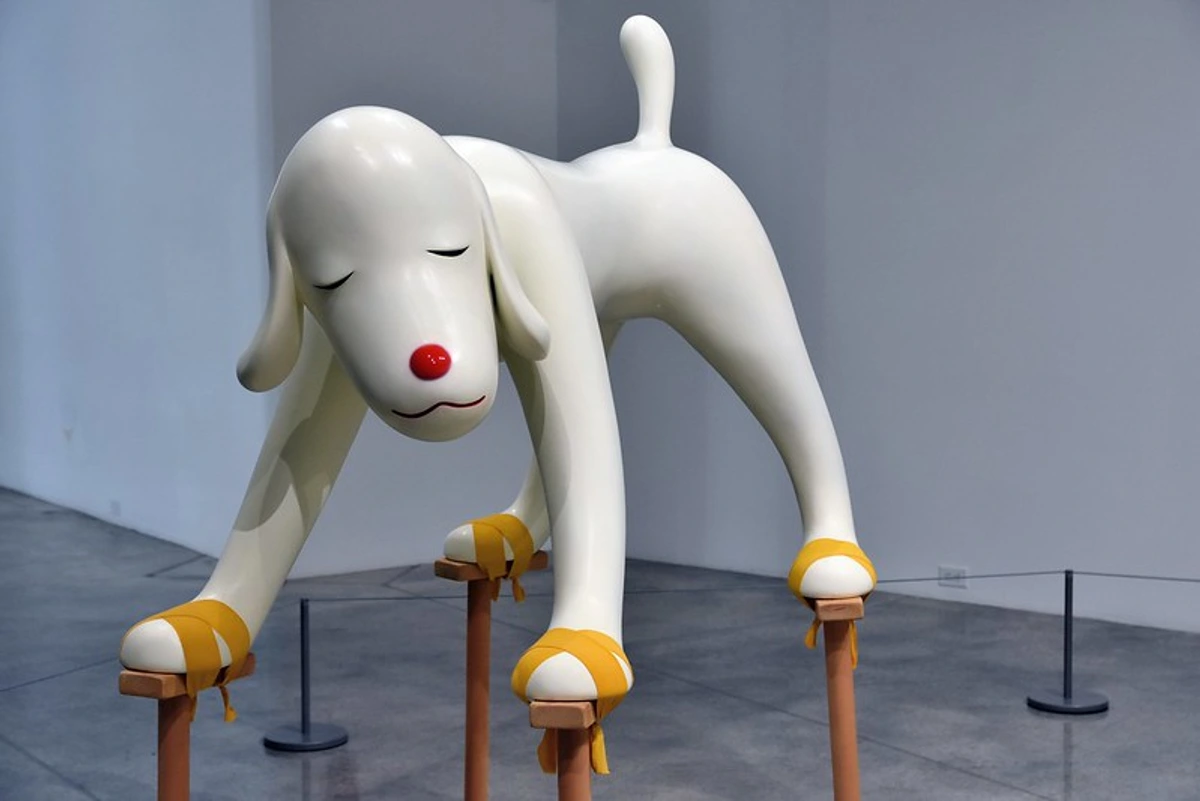
A Note on Artist-Run & DIY Spaces
Bushwick, perhaps more than other areas, thrives on artist-run spaces and a more DIY ethos. These aren't your slick Chelsea operations. Think smaller, sometimes temporary venues often run by artists themselves, showcasing truly emerging work, often experimental and non-commercial. It's where you might catch the very beginning of an artist's creative journey, sometimes raw but always energetic. I once attended an open studio event in Bushwick where I got to chat directly with an artist about their process, surrounded by works-in-progress and the smell of paint – it felt incredibly authentic and inspiring, a true glimpse behind the curtain of the maze. Finding them often requires checking local listings or following artists/curators on social media, as hours can be irregular. They represent the vital pulse of the grassroots scene, acting as essential workshops and testing grounds for new ideas.
Another key Brooklyn event is First Saturdays at the Brooklyn Museum. On the first Saturday of most months (check their schedule!), the museum stays open late and offers free admission, often with special programming, music, and events. It's a fantastic way to experience the museum and the surrounding cultural scene, drawing a lively, community-focused crowd. It's a different energy than a quiet weekday visit, a vibrant thread connecting the museum to its borough.
Exploring these diverse neighborhoods offers a much fuller picture of the dynamic NYC art scene, revealing the many different threads that make up the maze.
Digging Deeper: Specialized & Cultural Museums, Non-Profits, and Public Art
The official institutions are just part of the story. NYC thrives on a diverse ecosystem supporting art in many forms. These are some of the less-traveled paths in the art maze, often leading to unexpected encounters and deeper dives.
Specialized & Cultural Museums
NYC's museum wealth goes far beyond the big names. These institutions offer focused dives into specific cultures, periods, and media, adding incredible richness to the city's art landscape. They're like hidden chambers in the art maze, each with its own unique treasures.
- The Met Cloisters: Part of The Met, but worlds away in Fort Tryon Park (Washington Heights). It's dedicated to medieval European art and architecture, housed in structures assembled from actual medieval elements. Atmospheric and transportive. Visiting The Cloisters feels like stepping into a medieval fairytale, a peaceful escape from the city bustle. Seeing the intricate tapestries or the illuminated manuscripts makes you appreciate the dedication and skill of artists working centuries ago – a different kind of art inspirations, reminding you of the long lineage of artistic creation. Admission included with Met ticket.
- Brooklyn Museum: Near Prospect Park, this massive museum boasts incredible Egyptian and African art collections, strong American and European holdings, decorative arts, and the influential Elizabeth A. Sackler Center for Feminist Art. Often hosts engaging, socially relevant shows. It's a museum that feels deeply connected to its borough and the diverse stories it holds. I always try to visit their Egyptian collection – seeing pieces like the striking statue of the Lady of the House, Tuy, connects you directly to ancient lives and artistic traditions, making history feel incredibly present. Suggested admission.
- MoMA PS1 (Queens): MoMA's experimental outpost in Long Island City. Focuses on contemporary, often emerging artists, site-specific installations, performance, and the famous summer Warm Up music series. Housed in a cool former school building. MoMA PS1 is where the weird, exciting stuff happens – it's the place to go when you want to see art pushing boundaries and experimenting with new forms and media. It's the laboratory of the maze. Suggested admission.
- The Morgan Library & Museum: Near Grand Central, this is a treasure box. J.P. Morgan's stunning historical library complex holds incredible rare books, manuscripts (medieval to modern!), master drawings, and prints. A must for lovers of works on paper. The Morgan is a cozy, intellectual hug of history and beauty, a place to get lost in exquisite details. Seeing drawings by masters or the delicate lines of an illuminated manuscript makes you appreciate the fundamental importance of drawing in an artist's practice, reminding me that even the grandest ideas often start with a simple line. Admission required.
- Cooper Hewitt, Smithsonian Design Museum: On Museum Mile, the US's only museum solely devoted to historical and contemporary design. Interactive exhibits explore design's impact on everything. Housed in the grand Carnegie Mansion. Cooper Hewitt makes you see the design in everything around you, from a chair to a typeface. I love seeing how designers solve problems creatively; encountering an innovative piece of furniture or a beautifully crafted textile here always sparks ideas about form and function in my own work. Admission required.
- International Center of Photography (ICP): Now on the LES (Essex Crossing), ICP is the place for photography – historical, contemporary, photojournalism, digital. Great exhibitions and educational programs. While ICP is the mothership, don't forget dedicated photo galleries like Howard Greenberg Gallery (a classic!), Yossi Milo Gallery (often cutting-edge contemporary), and Danziger Gallery (known for both historical and contemporary masters). ICP is essential for understanding the power and evolution of the photographic image and how artists use this medium to capture the world. Admission required for ICP. ICP also has a renowned school, and their public programs and student shows offer another layer of engagement with the photographic community and emerging talent.
- Neue Galerie: A jewel box on Museum Mile focused on early 20th-century German and Austrian art/design. Home to Klimt's dazzling "Woman in Gold" and works by Schiele. Intimate and stunning. The Neue Galerie is pure elegance and focused beauty, a perfect dose of early modernism. Seeing Klimt's use of pattern and gold leaf, or Schiele's expressive lines, is a masterclass in style and emotion. Admission required.
- Museum of Arts and Design (MAD): At Columbus Circle, MAD champions contemporary craft, art, and design – ceramics, jewelry, textiles, furniture by skilled makers. It celebrates the skill and artistry of making things by hand in the modern age. It's a great place to see how traditional processes are being pushed and redefined by contemporary artists. Admission required.
- Rubin Museum of Art: In Chelsea, a serene space dedicated to the art of the Himalayas and neighboring regions, especially Tibetan art. Beautiful sculptures, paintings (like intricate mandalas and thangka paintings), and ritual objects. The Rubin offers a sense of peace and spiritual depth, a calm oasis in the city, a quiet corner in the maze. Admission required.
- Noguchi Museum (Queens): Oh, this place. If you need a dose of tranquility mixed with stunning sculpture, make the trip to Long Island City. Designed by the Japanese-American artist Isamu Noguchi himself, it houses his life's work in a beautifully converted factory building and serene sculpture garden. The journey there feels like part of the experience, and once you arrive, it's pure peace and thoughtful beauty. It's a holistic experience – the architecture, the light, the placement of each stone and abstract form feels intentional and deeply peaceful, like the space itself is a work of art. It makes you think about the relationship between art, space, and nature in a profound way. A truly unique gem that feels worlds away from the Manhattan hustle. Admission required.
- Museum of the Moving Image (MoMI) (Queens): Also out in Queens (Astoria, near LIC), MoMI is fascinating for anyone interested in how art intersects with film, television, and digital media. It's not just movie props (though they have those too!); it explores the history, technology, and artistry of the moving image in all its forms. Think interactive exhibits, classic video games you can play, insightful screenings, and installations that bridge the gap between cinema and contemporary art. I love MoMI for the sheer joy of seeing art and pop culture collide – I once spent way too long playing an old arcade game that was part of an exhibit on digital art history. It's a reminder that art is constantly evolving and incorporating new technologies. Admission required.
- National Museum of the American Indian (NY): Downtown in the gorgeous old Custom House. Part of the Smithsonian, it showcases the arts and cultures of Native peoples of the Americas. Free admission. A vital place for understanding the rich history and contemporary art of Indigenous peoples and seeing incredible examples of craftsmanship and storytelling through art.
- El Museo del Barrio: On Museum Mile, specializing in Latin American and Caribbean art, with a focus on Puerto Rican artists and the diaspora. It's a vibrant space celebrating the art and culture of the diaspora, offering perspectives often underrepresented in larger institutions. Suggested admission.
- The Studio Museum in Harlem: A vital institution for artists of African descent. Currently building a new home on 125th Street (check website for updates/off-site programs). Historically crucial and eagerly anticipated reopening. A cornerstone of Black art and culture, essential for understanding the full breadth of the NYC art scene.
- Bronx Museum of the Arts: Focuses on contemporary art by artists of African, Asian, and Latin ancestry, and artists connected to the Bronx. Free admission. A fantastic community-focused museum showcasing diverse contemporary voices.
- Museum of the City of New York: On Museum Mile, primarily history, but often features art, photography, and design exhibitions related to NYC's story. It tells the fascinating visual story of the city itself. Suggested admission.
- Tenement Museum (LES): Not strictly an art museum, but essential context. Restored apartments tell the stories of immigrants who shaped the city's cultural fabric. It provides powerful human context for the city's cultural landscape, reminding you of the lives lived behind the art. Note: Guided tours are highly recommended and often require booking well in advance due to popularity.
Key Non-Profit & Alternative Spaces
These organizations are the scene's vital connective tissue, often supporting riskier, non-commercial work. They're key parts of the New York contemporary art galleries ecosystem, even if they don't operate like commercial dealers. They're where the "weird stuff" happens, where artists take risks, the engine room of the scene, often exploring experimental processes and ideas. These are like the hidden workshops within the maze, places where the rules are bent and new forms are forged. For me as an artist, these spaces feel vital because they champion work that might not fit neatly into the commercial market, reminding me that art is about exploration and pushing boundaries.
- Dia Art Foundation (NYC): While Dia Beacon is their famous upstate outpost, Dia also maintains significant long-term installations in NYC, notably Walter De Maria's iconic The New York Earth Room (SoHo) and The Broken Kilometer (Chelsea). Visiting these feels like a quiet, almost spiritual encounter with art that exists outside the usual gallery hustle. Check their website for visiting hours, as they can be limited. They make you think about space, scale, and the environment in profound ways.
- The Drawing Center (SoHo): This space has a unique and crucial focus on drawing as a medium, showcasing its importance beyond just preparatory sketches. They feature historical and contemporary exhibitions that explore the breadth and depth of drawing in all its forms. It's a must-visit for anyone who appreciates the power of line and mark-making – the fundamental building blocks of so much art. Seeing the variety of approaches to drawing here is incredibly inspiring for my own practice. Suggested admission.
- Printed Matter (Chelsea & St Marks Pl): The go-to for artists' books and publications. A browser's paradise for unique printed matter. I could spend hours here just flipping through books – it's a different way to experience an artist's work and process. It highlights the importance of printmaking and publishing in the art world. Free entry.
- SculptureCenter (Queens): Commissions and exhibits innovative sculpture and installation. Essential for seeing contemporary sculpture pushed to its limits, exploring form, material, and space in unexpected ways. Suggested admission.
- Artists Space (Tribeca/Lower Manhattan): Legendary space for supporting emerging, experimental artists. A historical and ongoing champion of the avant-garde, often showing work that challenges conventions. Free entry.
- Swiss Institute (East Village): International contemporary art with a forward-thinking edge. Always interesting, often challenging, bringing global perspectives to the NYC scene. Suggested admission.
- Apexart (Tribeca): Curated exhibitions based on global proposals, often tackling social issues. Thought-provoking shows with a global perspective. Free entry.
- Pioneer Works (Red Hook, Brooklyn): Multi-disciplinary center in a cool factory building – art, science, music meet here. A truly unique space fostering cross-disciplinary creativity and experimentation. Check website for event-specific fees.
- The Kitchen (Chelsea): A cornerstone for performance art, video, dance, and music since the 70s. Expect experimental, boundary-pushing live work. It's less about static objects, more about experiences that unfold in time. Performance art here can be different, sometimes challenging, but often incredibly rewarding and memorable – it makes you think about the artist's body and presence as a medium. I once saw a performance here that completely shifted my perspective on storytelling, leaving me thinking about it for days. It's a vital thread for understanding the ephemeral side of the art world. Check website for ticket prices.
- Performance Space New York (East Village): Another crucial venue dedicated to performance, often featuring bold, interdisciplinary works that challenge conventions. Check their schedules for unique live art happenings. Like The Kitchen, it's about experiencing art in the moment. Check website for ticket prices.
- International Studio & Curatorial Program (ISCP) (Bushwick): Also significant, especially for international connections. While not a traditional gallery, ISCP is a major hub hosting artists and curators from around the world for residencies, often culminating in open studios or project exhibitions. It's a vital node in the global contemporary art network centered in NYC. Visiting during open studios is a unique opportunity to see art in progress and maybe even chat with the artists about their creative journey – a real peek behind the scenes, like visiting the maze's control room. Check website for event schedules.
Public Art & Street Art Spectacles
- Public Art Fund: Brings contemporary art projects to public spaces all over NYC (parks, bus shelters). Check their website for current installations! Think of the rotating commissions on the High Line Plinth or the dazzling digital art takeovers in Times Square via Times Square Arts' Midnight Moment program (every night from 11:57 PM to midnight!). Seeing major art outside, for free, woven into the city fabric? That's pure NYC magic, the joy of encountering art unexpectedly as you navigate the city. I remember walking through a park and suddenly coming across a massive, vibrant sculpture I knew only from photos – it felt like the city itself was curated just for that moment. It's art democratized, breaking free from the walls of the maze. Look out for specific permanent installations too, like the iconic Charging Bull sculpture near Wall Street (though often surrounded by crowds) or the numerous murals and sculptures integrated into subway stations and public buildings throughout the city.
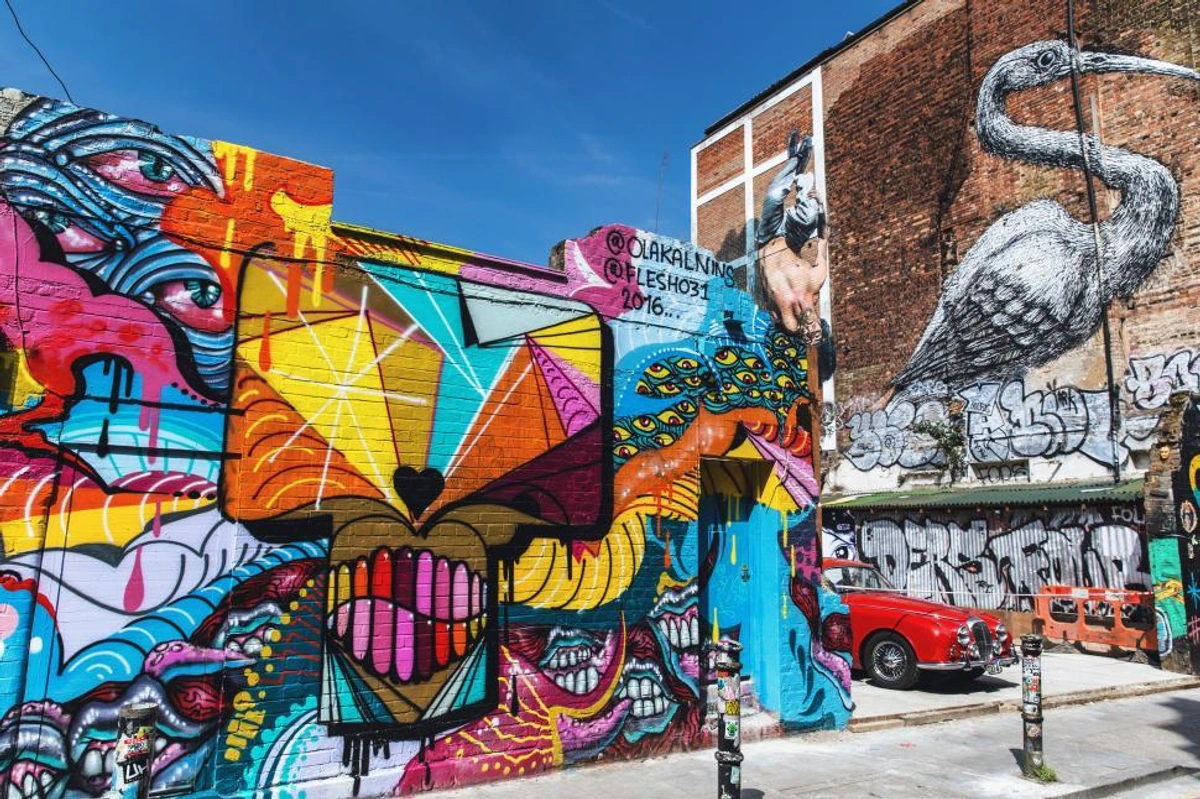
- NYC's Street Art Scene: Forget sterile white walls for a minute. The city itself is a canvas. While some is unsanctioned graffiti (admire responsibly!), there are dedicated spaces where mural art thrives. The Bushwick Collective in Brooklyn is a famous explosion of large-scale murals by artists from around the globe – it's an outdoor gallery constantly in flux. Similarly, the Welling Court Mural Project in Astoria, Queens, offers a concentrated dose of diverse street art styles. Wandering these areas (or just keeping your eyes peeled anywhere) offers a totally different, often more raw and immediate, art experience. It's ephemeral, democratic, and undeniably NYC. Seeing the scale and energy of these murals always makes me think about the artist's process and connection to the community. This is where you see the evolution of art forms like Street Art happening in real-time.
Other Avenues: Auction Houses & University Galleries
These spots offer different perspectives on the art world, from the high-stakes market to academic exploration.
- Auction House Previews: Want a free peek at multi-million dollar masterpieces before they disappear into private hands? Keep an eye on the major Auction Houses like Sotheby's (UES), Christie's (Rockefeller Center), and Phillips (Park Ave). Before their big seasonal sales (especially May and November), they hold public viewing exhibitions. It's a fantastic way to see incredible art history up close, from Old Masters to Impressionism and major contemporary artists like Richard Prince or Damien Hirst, often displayed with museum-level care. Walking through a preview feels like a temporary, high-stakes museum visit – the hushed reverence, the security guards eyeing everyone (including me, probably wondering if I'm about to trip over a priceless antiquity), the sheer value on display is palpable. It's a fascinating glimpse into the intersection of art and commerce. Check their websites for schedules – it’s like a temporary, high-stakes museum. It also gives you a glimpse into the workings of the secondary art market.
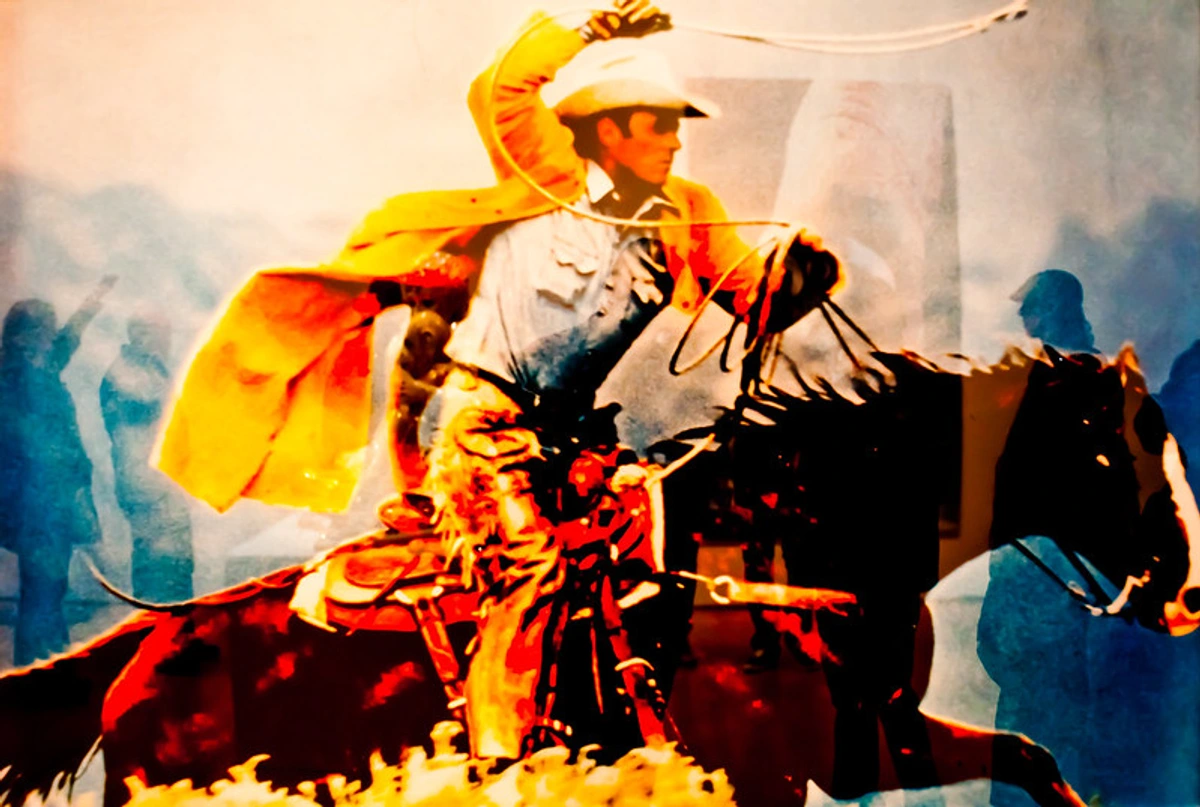
- University & Art School Galleries: Don't overlook the academic hubs! Universities often have excellent, professionally curated galleries that are open to the public (sometimes free). They mount thoughtful exhibitions, sometimes highlighting faculty or student work, but often featuring significant historical or contemporary shows tied to scholarly research. Key ones include NYU's Grey Art Gallery (Wash Sq) and Columbia University's Wallach Art Gallery (Harlem campus). But the city's art schools punch above their weight too – check out the Pratt Institute Galleries in Brooklyn (multiple locations!), the SVA Chelsea Gallery run by the School of Visual Arts, the Cooper Union Irwin S. Chanin School of Architecture Gallery, and galleries associated with Parsons School of Design. Also worth noting is the New York Studio School in Greenwich Village, which has a gallery space and a rich history tied to Abstract Expressionism and figurative art. These institutions are vital to the art ecosystem, nurturing future talent and often hosting public events, lectures, and student shows that offer a glimpse into the next generation of artists and their creative journeys. They offer a different context for viewing art, often quieter and more focused than the big museums, and you might just spot a future art star before they hit the big time. For those interested in deeper research, some university libraries or specialized institutions like the Frick Art Reference Library offer incredible resources, though access might require appointments or specific credentials – another layer of the maze for the truly dedicated.
Day Trip Bonus: Dia Beacon (Upstate NY)
Okay, not in NYC, but an easy train ride from Grand Central. Dia Beacon houses Dia Art Foundation's jaw-dropping collection of large-scale minimalist and conceptual art (Serra, Judd, Flavin, Bourgeois) in a massive former factory. It's the spiritual home for Minimalism and Conceptualism in many ways, with vast spaces dedicated to artists like Donald Judd and Dan Flavin. An unforgettable pilgrimage for serious contemporary art fans – a different kind of best gallery experience. Walking through those vast, quiet spaces with monumental works feels like reaching a significant landmark in the maze, a place for quiet contemplation on form and space. It's absolutely worth the trip if you have the time.
Art Fair Mania: When the Global Scene Descends on NYC
Want to see hundreds of the best galleries from NYC and around the world all in one (potentially overwhelming) place? Time your visit for a major art fair. Fair weeks (especially May and September) are buzzing city-wide. It's like the entire art maze converges into one giant, temporary structure.
- The Armory Show (September, Javits Center): Huge international fair for modern and contemporary.
- Frieze New York (May, The Shed): Major contemporary player, known for curated sections.
- TEFAF New York (May & Oct/Nov, Park Avenue Armory): Super high-quality; Spring is modern/contemporary, Fall is historical art/antiques.
- Independent Art Fair (May, Tribeca): More curated, focus on discovery.
- NADA New York (May, LES area): Focus on emerging galleries and artists, great energy.
- Outsider Art Fair (March, Chelsea): Dedicated to self-taught, Art Brut, and outsider artists.
- VOLTA New York (Often alongside Armory/Frieze): Focuses on solo artist presentations.
- Affordable Art Fair (Spring & Fall): Aims for accessibility, price caps make it good for new collectors looking to start an art collection on a budget.
Fairs require tickets and stamina. The sensory overload can be intense – so much art, so many people, so much buzzing energy! It's exciting but definitely requires pacing. Check our tips on visiting art fairs if you plan to go. Art fairs are a temporary, intense convergence of the maze's many threads.
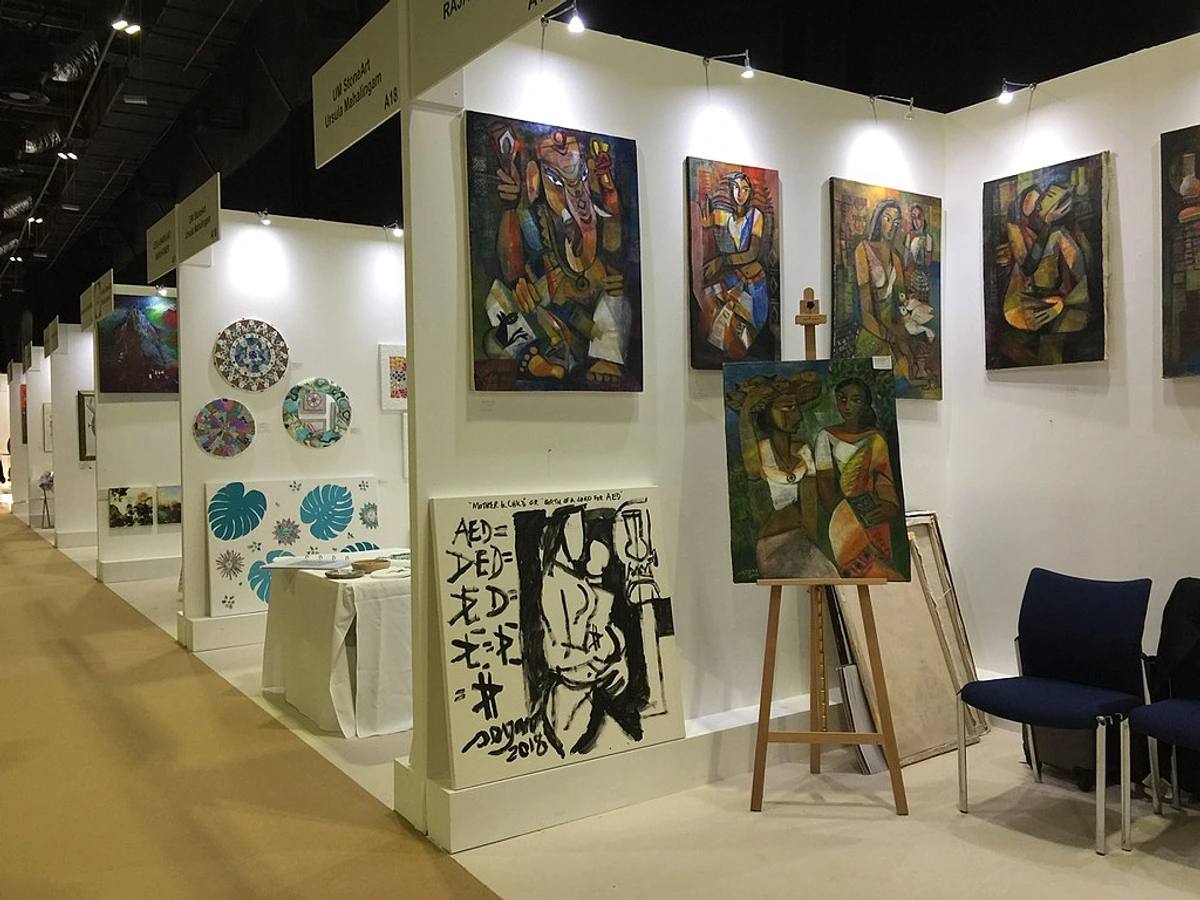
Tips for Surviving (and Loving) Your NYC Art Adventure
Navigating this art jungle requires a bit of strategy. Trust me on these – I've made the mistakes so you don't have to (or maybe you will anyway, it's part of the fun!). Think of these as tools for finding your way through the maze without getting completely lost.
- Check Hours & Dates Like Your Life Depends On It: Seriously. This is the most important tip for navigating the maze successfully. Museum hours vary (many close one day a week, often Mon/Tues). Commercial galleries (Chelsea, LES etc.) typically open Tuesday through Saturday, often 10 AM or 11 AM to 6 PM, but are frequently closed Sunday and Monday, sometimes Tuesdays too, especially smaller ones. CRUCIAL: Many galleries close entirely or have reduced summer hours/appointments only, particularly in August! July and August often feature large group shows rather than solo presentations, and some galleries might adopt early Friday closures for summer weekends. Some non-profits or university spaces have different schedules. ALWAYS check official websites before heading out. Don't trust old listings! I once showed up to a gallery I was dying to see only to find a tiny sign saying "Closed for August." My heart sank. Learn from my mistakes! Also, remember to check for temporary exhibitions – these are often major highlights and change frequently, so seeing what's currently on is crucial.
- Comfortable Shoes Are Non-Negotiable: You will walk MILES. Gallery hopping is exercise. Big museums are marathons. Your feet will thank you. I learned this the hard way more times than I care to admit – blisters are not the souvenir you want from the maze.
- Plan by Neighborhood: Don't zigzag across the city. Group visits geographically (Museum Mile day, Chelsea day, LES/Tribeca day, Queens museum day). Use mapping apps. The subway is your friend (usually). Use gallery maps or online resources to plan a route within a district like Chelsea or LES to maximize time and minimize aimless wandering. It's like plotting your specific thread for the day.
- Consider a Themed Visit: Feeling overwhelmed by the options? Try planning your day around a specific interest! You could do a "Modernism Day" hitting MoMA, the Guggenheim, and Neue Galerie. Or a "Contemporary Gallery Hop" focusing on Chelsea and Tribeca. A "Photography Focus" could include ICP and galleries in SoHo. Or maybe a "Design & Craft Exploration" with Cooper Hewitt and MAD. This can make the vastness of the maze feel more manageable and tailored to your interests.
- Book Online, Avoid the Lines: For major museums, booking timed tickets online in advance is usually smart, sometimes mandatory. Saves time, guarantees entry. For popular spots like the Tenement Museum, booking guided tours well in advance is highly recommended, as they often sell out.
- Embrace the Impossible: You can't see everything, especially at The Met or Brooklyn Museum. Don't try. Focus on what excites you. Take breaks. Maybe practice how to read a painting to deepen your looking. Museum fatigue is real; fight it with focus and coffee. It's okay to feel overwhelmed; that's part of the experience! Just soak in what you can. Your personal thread doesn't have to follow every single turn.
- Gallery Etiquette (It's Chill, Mostly):
- Walk right in (during open hours, entry is free). You're not interrupting anything, promise.
- Looking respectfully is encouraged; no purchase necessary. Nobody expects you to buy the million-dollar painting.
- Ask for a press release/checklist for info. It makes you look like you know what you're doing (even if you don't!).
- Hands off the art! Keep a polite distance. Seriously, don't touch the thing that costs more than your car.
- Photo policies vary – check signs or ask (usually no flash is okay). Don't be that person blinding everyone.
- Browse at your own pace. Staff are used to lookers. Engage if you have real questions about the work or buying art. You don't need to make small talk or pretend to be a collector. Just enjoy the art. Remember, gallery staff are often very knowledgeable and can provide valuable information if you ask specific questions about the art or artist.
- Restrooms: Rarely public in galleries. Museums are your best bet. Plan ahead! This is crucial intel for navigating the maze comfortably – don't get caught out!
- Use Digital Scout Tools: Websites like NY Art Beat, See Saw, or Hyperallergic's listings are great for current gallery shows. NYT, New Yorker, New York Mag also have good listings. For more insider buzz and gallery scene specifics, keep an eye on the Artforum Diary section online or dedicated gallery coverage in Artnet News – they often capture the openings and the chatter. Also, follow galleries and artists on social media (Instagram is great!) for real-time updates, exhibition previews, and a peek behind the scenes – it's like a digital thread through the maze, keeping you connected to the pulse of the scene.
- Membership Math: If you're local or visit often, museum memberships can pay off fast and offer nice perks.
- Freebie Hunt: Check museum sites for free evenings/days (e.g., Bronx Museum always free, NatMusAmericanIndian always free). Be prepared for crowds. Auction house previews are also great free viewing! Check for specific exhibition openings (often Thursday evenings) as a different, more social way to experience the gallery scene – just be prepared for crowds and maybe some free wine (but don't count on it!). Also, look out for specific neighborhood art walks or festivals (beyond just Bushwick Open Studios) – these pop up throughout the year and offer unique access to studios, pop-ups, and community events, like Gowanus Open Studios or LIC Arts Open. Don't forget Brooklyn Museum's First Saturdays for free evening access and events. If you're visiting in June, check the date for the annual Museum Mile Festival for free admission to many UES museums. Also, check museum websites for free tours, talks, or lectures, which can offer deeper insights into collections or exhibitions.
- Accessibility Check: Need info on ramps, elevators, accessible restrooms, etc.? Your best bet is always the venue's official website. Look for an "Accessibility," "Visit," or "Plan Your Visit" section. Policies and facilities vary widely, so check ahead for each specific place. Look for details on wheelchair routes, elevator access, accessible restrooms, availability of large print labels, sensory maps for neurodivergent visitors, or scheduled ASL interpretation for tours or talks. It's always better to know before you go.
- Pace Yourself: Art overload is real. Schedule breaks. The High Line is perfect for a Chelsea breather. Grab a coffee on the LES. Let the art sink in. Remember to check for temporary closures or moves, especially for smaller galleries, as the scene is constantly in flux – the maze is always changing!
- Consider an Art Consultant: If you're serious about starting an art collection on a budget or building a significant one, navigating the market can be complex. Art consultants or advisors can offer expertise, guide you through galleries and fairs, and help you find pieces that fit your taste and budget. They're another valuable thread in the art world maze, especially for collectors.
- Take Notes or Sketch: Especially if you're an artist or aspiring one, bringing a small notebook or sketchpad can deepen the experience. Jotting down observations, sketching details, or simply writing down the name of an artist or piece that resonates can help you process the sheer volume of art and capture those fleeting art inspirations.
- Research After Your Visit: Don't feel pressured to absorb everything on the spot. Take photos (where allowed!) and jot down names, then look up artists or exhibitions online after your visit. This is a great way to deepen the experience and learning at your own pace.
- Reflect on the Experience: Take a moment to think about how seeing art in different contexts feels. The quiet reverence of a museum, the buzz of an opening, the raw energy of a Bushwick studio, encountering public art unexpectedly on the street – each offers a unique connection to the work and the city. I find that shift in atmosphere is almost as much a part of the art experience as the art itself.
Burning Questions: NYC Art FAQs
Let's tackle some common queries about navigating the maze:
Q1: Are art galleries in NYC free?
A: It depends! Major museums (MoMA, Guggenheim, Whitney etc.) charge admission (The Met has pay-what-you-wish for locals/regional students, but standard price otherwise). But the individual commercial galleries – the places selling art in Chelsea, LES, Tribeca, UES – are typically FREE to enter and view exhibitions during their open hours (usually Tue-Sat). This free access is a massive perk of the NYC art scene and why gallery districts are so popular for finding the "best galleries nyc". While visitors enter galleries for free, the business model between galleries and the artists they represent involves contracts, commissions on sales, and sometimes shared costs for exhibitions or production. Galleries invest heavily in promoting their artists. It's not typically a simple "pay-to-play" fee for representation at established galleries, but rather a partnership with financial implications. Visiting exhibitions, however, remains free. Non-profits might be free or suggest a donation. Auction house previews are also free. Street art is free!
Q2: Which NYC museum is best for modern art?
A: MoMA (Museum of Modern Art) is the undisputed champion for a comprehensive overview of modern and contemporary art from the 1880s onward, especially strong in Abstract Expressionism and iconic works like Picasso's Les Demoiselles d'Avignon and Van Gogh's Starry Night. The Whitney nails American modern/contemporary, with particular strengths in photography and video. The Guggenheim shines with European modernism (especially Kandinsky) and notable Rothko pieces. The Neue Galerie offers exquisite German/Austrian modernism. The Met and Brooklyn Museum also have strong modern collections within their vast holdings. You have options!
Q3: What's the biggest art museum in NYC?
A: The Metropolitan Museum of Art (The Met). It's colossal in size and collection scope (over 2 million objects!). Definitely the heavyweight champ of the museum world.
Q4: Where are the main contemporary art galleries in NYC?
A: Chelsea is the densest hub for new york contemporary art galleries, packed with major international dealers. The Lower East Side (LES) is the second major center, often featuring younger, more experimental galleries. Tribeca is the fast-growing third hub, attracting many established galleries moving or expanding. These three art galleries manhattan districts hold the lion's share. Don't forget Bushwick for emerging scenes and artist-run spaces!
Q5: Chelsea vs. Lower East Side vs. Tribeca galleries – what's the difference?
A: Generally: Chelsea = bigger, polished warehouse spaces, more "mega-galleries," often higher market value artists (but still diverse!), frequently focusing on established painting, sculpture, and installation. Visit for the big names and museum-scale shows – the main thread. LES = smaller storefronts, more emerging/mid-career focus, often grittier or more experimental vibe, strong in multimedia and conceptual work. Visit for discovery and a raw, energetic feel – a winding side path. Tribeca = a mix, often in historic ground-floor spaces, attracting both established names and newer ventures. Visit for a blend of blue-chip and cutting-edge in a rapidly evolving area – a path that's still being forged. Visiting all three gives you a much richer picture of the galleries in new york contemporary scene.
Q6: Can I actually buy art from these galleries?
A: Yes! That's their primary business. Commercial galleries (Chelsea, LES, etc.) represent artists and sell their work. If something catches your eye, ask at the front desk for a price list or details. Prices usually aren't displayed, but are available on request. Knowing a bit about how much original art costs or how to buy art can be helpful. The feeling of potentially buying a piece, even if it's just a print, is exciting! It shifts the experience from just looking to imagining the art in your own space. If gallery prices feel steep (they often are!), exploring prints (check out publishers like Pace Prints, Carolina Nitsch, Two Palms, or ULAE), emerging artists via open studios or smaller galleries, or finding affordable original art online are other paths. Maybe gallery hopping gives you art inspirations for pieces you might want to buy later! For those looking to build a significant collection, art consultants or advisors can also be valuable resources, offering expertise and guidance in navigating the market. If you are serious about collecting a specific artist or type of work, building a relationship with a gallery can be incredibly beneficial over time.
Q7: Is visiting art spaces outside Manhattan worth the trip?
A: Absolutely! Brooklyn Museum, MoMA PS1 (Queens), Bronx Museum, SculptureCenter (Queens), Noguchi Museum (Queens), Museum of the Moving Image (Queens), ISCP (Brooklyn), Dia Beacon (upstate day trip) offer incredible art and experiences you won't find in Manhattan. It broadens your perspective on the city's culture and definitely belongs on any comprehensive list of the best art galleries in New York (broadly defined). Plus, you get to see more of NYC! These are like venturing into different wings of the maze.
Q8: How much time do I need?
A: For giants like The Met/MoMA: Minimum 3-4 hours for a very selective tour, ideally a full day (or multiple visits). For gallery hopping (Chelsea/LES): Allow 3-5 hours to pop into 10-20+ galleries comfortably. For specialized museums like Noguchi or MoMI, maybe 2-3 hours. Pace yourself based on your energy and interests! Remember, it's a marathon, not a sprint.
Q9: Why these specific places? What makes them the 'best'?
A: Good question! These are the places that have consistently blown my mind, or they represent the different facets I love about the NYC art world. They are considered among the best art galleries NYC offers because they excel in areas crucial to the New York art world:
- Influence & Reputation: They're internationally recognized leaders (MoMA, Met, Guggenheim, Noguchi for its unique focus, Dia Beacon for Minimalism/Conceptualism). Dia's NYC sites (Earth Room, Broken Kilometer) are iconic. Asia Society is key for Asian art.
- Quality of Collections/Exhibitions: They hold major historical art or consistently show high-caliber work by significant artists (like Koons, Kusama, Richter at top galleries), both historical and contemporary. Auction house previews show market highlights. The Drawing Center offers a unique focus, and Printed Matter is essential for artists' books.
- Artist Representation: Top commercial galleries represent critically acclaimed, influential artists, including many top living artists today. Print publishers like Carolina Nitsch or Two Palms work with top names.
- Visitor Draw & Critical Acclaim: They attract crowds and critical attention (check Artforum Diary or Artnet News!), signaling their importance. Even specialized places like MoMI, ICP (including its school programs), or university galleries (Pratt, SVA Chelsea, NY Studio School) have dedicated followings.
- Contribution to the Scene: Places like the Studio Museum, New Museum, performance venues like The Kitchen, key non-profits, residency programs like ISCP, or artist-run spaces in Bushwick have played vital roles in art history or supporting specific communities/genres. Public Art Fund installations (High Line Plinth, Times Square Arts) reflect the city's energy. Art schools (SVA, Pratt, Cooper Union, Parsons, NY Studio School) are the lifeblood.
- Concentration (for Districts): Chelsea, LES, Tribeca are "best" for gallery hopping due to density and variety of galleries in Manhattan. It's about efficiency and breadth. Knowing key cross-streets (W 22nd in Chelsea, Orchard in LES, Walker in Tribeca) helps navigation.
Go Forth and Explore (and Maybe Get a Little Lost)
Consider this guide your starting map to the magnificent, overwhelming, and utterly rewarding world of art in New York City. From museums that feel like time machines to galleries pulsing with the art of tomorrow, from serene sculpture gardens to vibrant street murals, there's always something new to discover. Whether you're a seasoned pro navigating the secondary market or just curious, the top art galleries New York provides offer endless visual feasts and art inspirations. Enjoy the journey, find your own path, and pull your personal thread through the incredible NYC art maze! Even after countless visits, the maze always has new turns and hidden corners waiting to be explored.
This guide is based on my personal experiences and research as an artist navigating the NYC art scene. While I have a museum in the Netherlands (my museum) and sell my own art, this guide focuses on helping you explore the incredible institutions and galleries New York City has to offer, drawing from my own creative journey and love for this vibrant art world.




